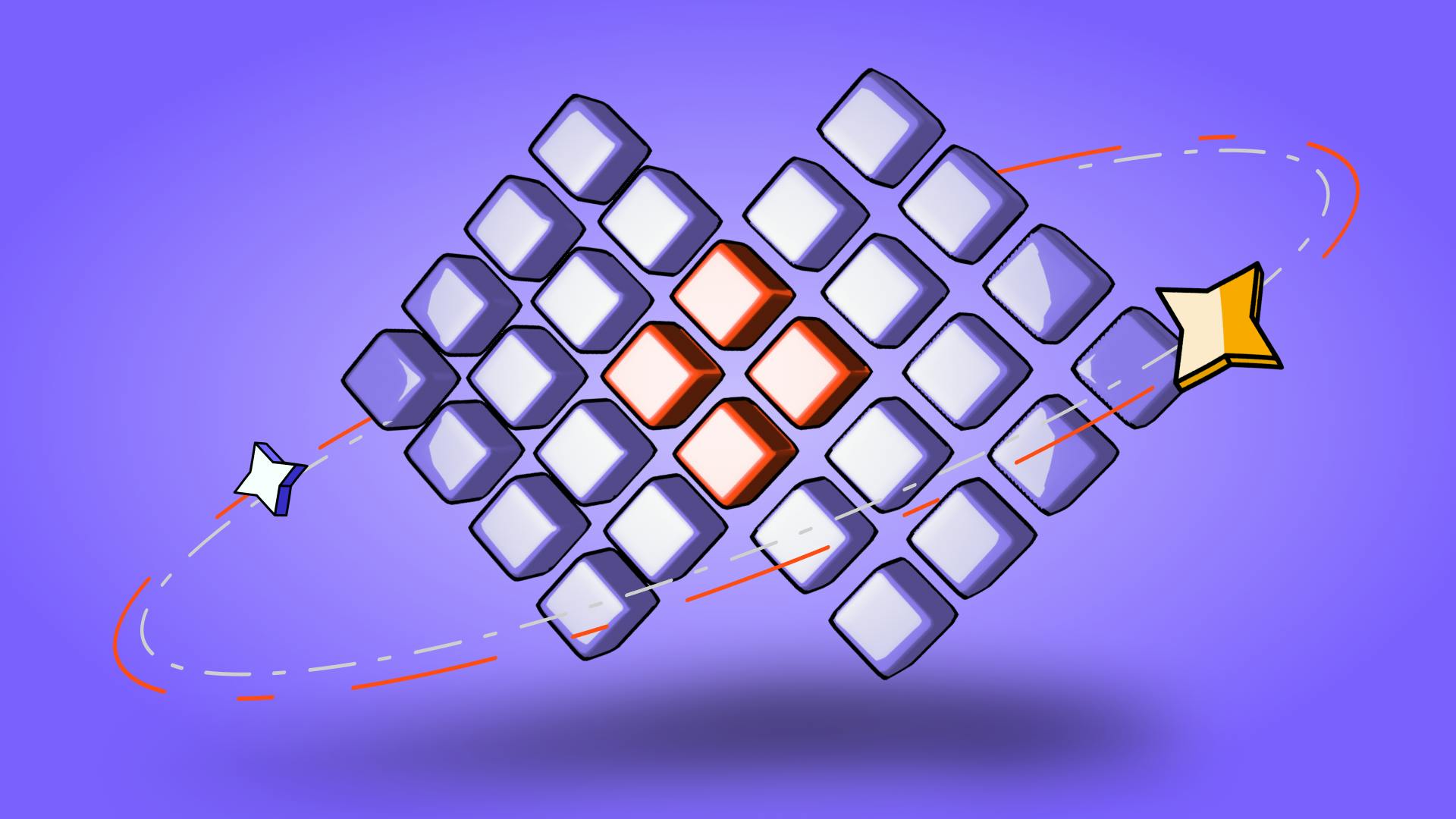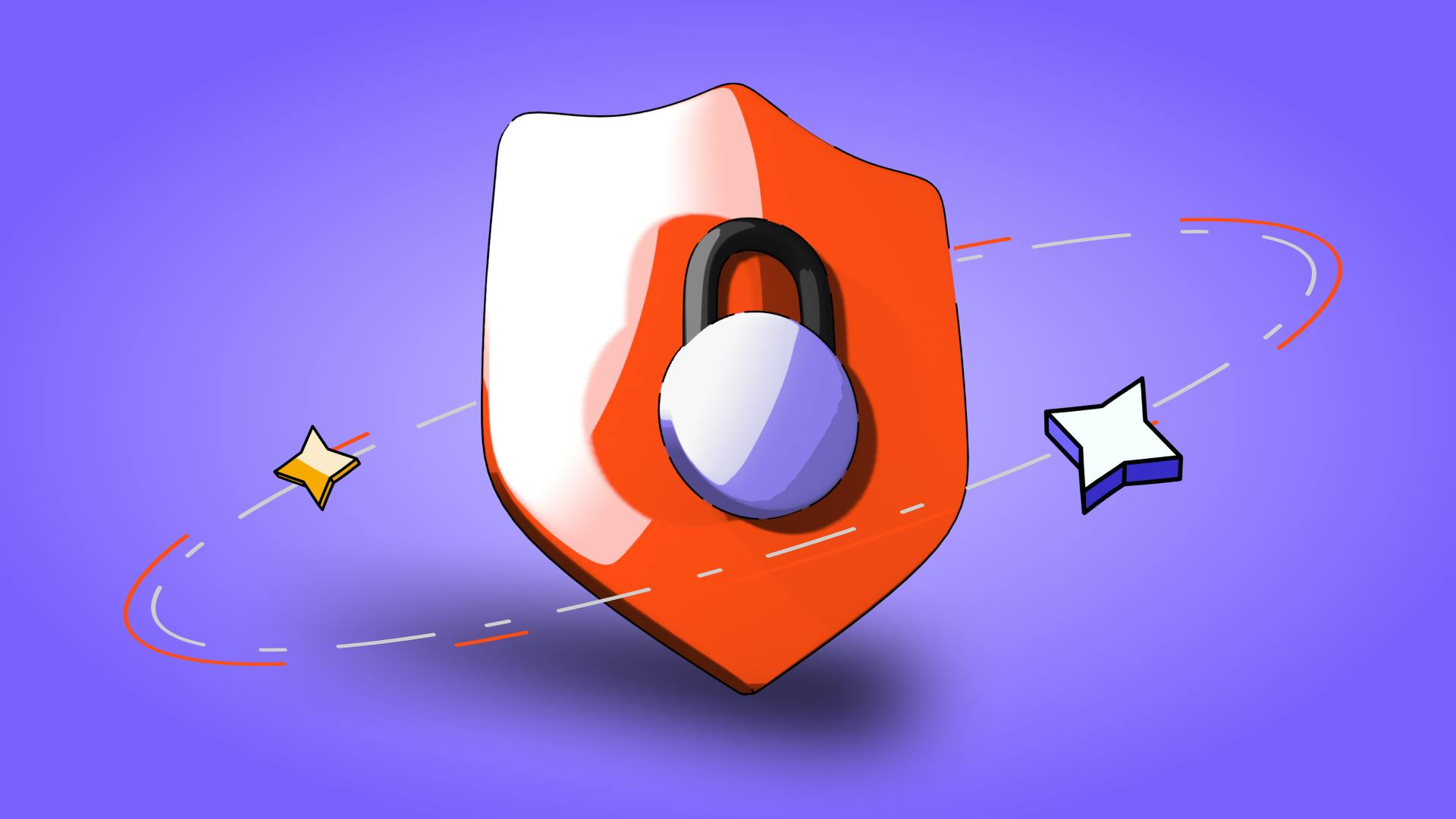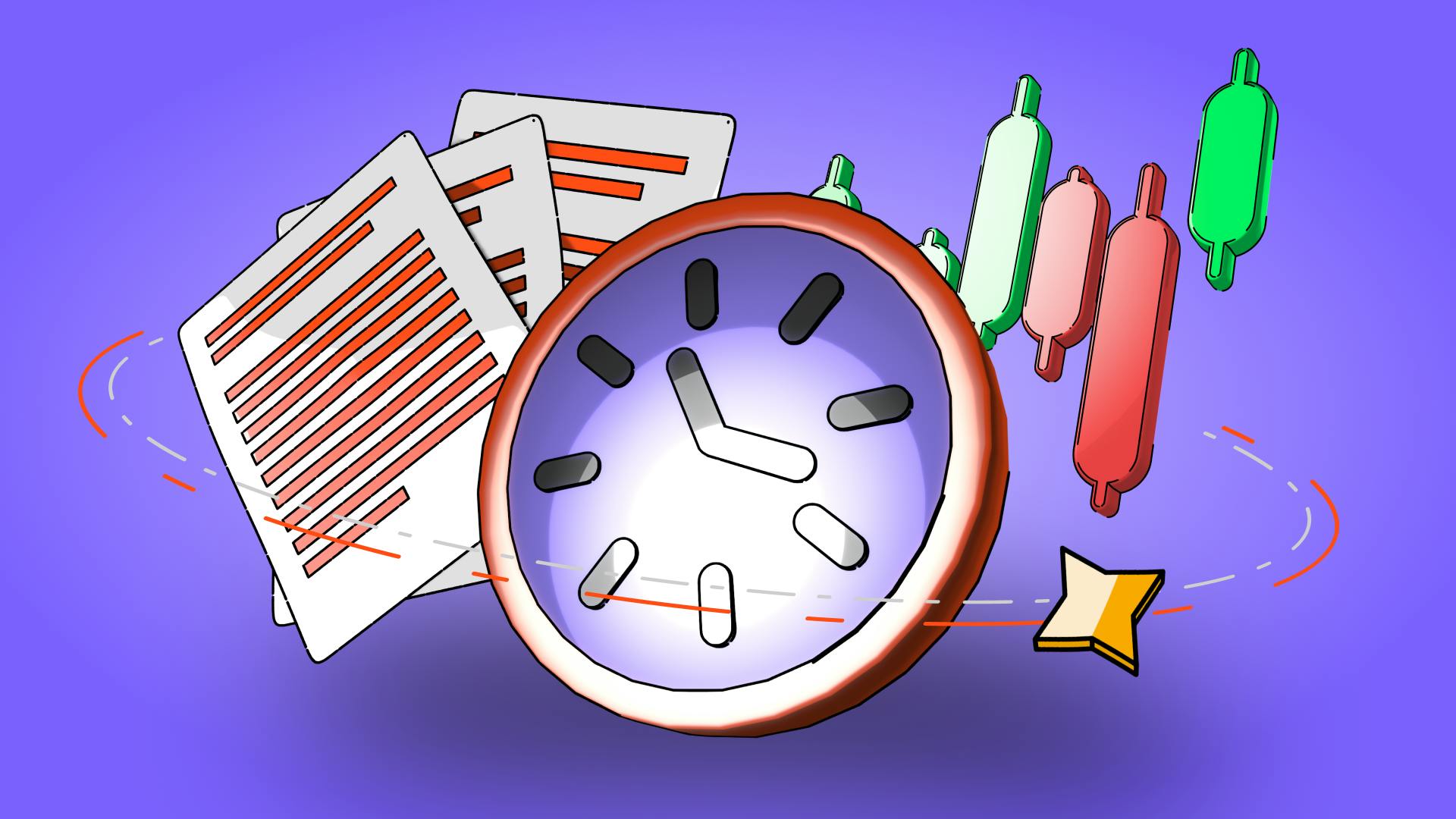Cross-chain vs. Multi-chain: Charting the Course in Blockchain Evolution
December 5, 2025

by Coinmetro
December 5, 2025
While blockchain technology reshapes the way we think about digital transactions and data security, the language of the industry can be a maze of complex terms and phrases, often leaving newcomers scratching their heads. It's as if the blockchain world has developed its own dialect! The blockchain ecosystem is replete with terms like "smart contracts," "consensus mechanisms," "cross-chain", and "multi-chain." Understanding blockchain terminology is more than just learning a new set of words; it's about gaining insights into how this transformative technology is changing the way we store, transmit, and trust data. This knowledge empowers individuals and businesses to explore and utilize blockchain solutions, from cryptocurrencies and decentralized applications, to supply chain management and beyond. Let’s find out more about cross-chain and multi-chain networks!
As the name implies, one of the most fundamental and defining elements of blockchain technology is the concept of "chains." Understanding the role of chains in blockchain is essential to grasp how this technology works and why it's considered so secure and reliable.
At its core, a blockchain is a distributed ledger that records transactions across a network of computers. These transactions are grouped into blocks, and each block is linked to the previous one, forming a chain of blocks. Hence, the term "blockchain." These chains serve several crucial purposes:
Transaction Security: Chains ensure that once a transaction is added to a block and the block is added to the chain, it becomes nearly impossible to alter. This immutability is a key feature of blockchain technology, making it a trusted platform for financial transactions, supply chain management, and more.
Consensus Mechanism: Chains also play a role in the consensus mechanism of blockchain networks. The nodes (computers) in a blockchain network work together to validate and confirm transactions. This consensus is achieved through complex algorithms and protocols, and the chain ensures that all nodes agree on the state of the ledger.
Transparency and Accountability: The blockchain's public nature means that anyone can view the entire transaction history by following the chain of blocks. This transparency builds trust and ensures accountability, as all participants can verify and audit the transactions.
Traceability: Chains allow for the tracking of assets and transactions, making them invaluable in supply chain management, ensuring authenticity in the art world, and even verifying the origins of sustainable goods.
Therefore, chains in the blockchain world are the backbone of the technology, holding together the blocks of transactions in an immutable, secure, and transparent manner. Now let’s move on to actually talking about cross-chain and multi-chain technology.
As the blockchain landscape progressed, there was a pressing need to address the scalability and interoperability aspect of the technology. Over time, the concepts of cross-chain and multi-chain have gained significant attention, and the technology behind them has played a pivotal role in driving innovation and shaping the industry. These innovations have not only addressed existing challenges but have also opened up new possibilities for blockchain technology. Understanding these terms and their implications is essential for anyone looking to fully comprehend the evolving landscape of blockchain and its potential impact on various industries:
Cross-Chain: Refers to the ability of different blockchain networks to communicate and share data or assets with each other. This interoperability is crucial because the blockchain space is no longer dominated by a single network. With numerous blockchains offering various features and capabilities, the ability to transfer assets or data seamlessly between these networks is a game-changer. It allows for enhanced functionality and a broader range of use cases.
Multi-Chain: Involves the existence of multiple chains within a single blockchain ecosystem. These chains can serve different purposes or have varying characteristics. For example, there might be a main chain handling the primary transactions and several sidechains for other specific functions. Multi-chain systems offer scalability and versatility, enabling a blockchain to handle a larger number of transactions efficiently.
Understanding cross-chain and multi-chain concepts matters for several reasons:
Scalability: A persistent challenge in the blockchain space. Cross-chain and multi-chain solutions offer ways to address this issue. Cross-chain transactions allow assets or data to move freely between different blockchains, reducing congestion on a single network. Multi-chain architectures, on the other hand, provide a means to process a higher volume of transactions without compromising efficiency.
Interoperability: As the entire blockchain landscape matures, it's increasingly important for different networks to work together. Cross-chain compatibility enables smoother integration between various blockchain projects, improving the overall functionality and utility of the technology.
Diversification: Cross-chain capabilities offer diversification of assets and data. This diversification can enhance security and reduce risks associated with a single blockchain network. It allows users to leverage the strengths of different blockchains for specific use cases.
Enhanced Use Cases: Understanding cross-chain and multi-chain can unlock new use cases and applications. For instance, it enables the creation of decentralized applications (dApps) that can interact with multiple blockchain networks, opening up possibilities in decentralized finance (DeFi), supply chain management, gaming, and more.
It’s safe to say that understanding cross-chain and multi-chain is not just a matter of terminology. These concepts underpin the scalability, interoperability, and diversification that are key to the blockchain's continued growth and relevance in the digital age.
Cross-chain, in the world of blockchain technology, refers to the capability of various blockchain networks to interact, share data, or transfer assets with each other. This interoperability allows different blockchain ecosystems to communicate, fostering a seamless exchange of value or information between otherwise separate and distinct blockchains.
Cross-chain technology holds profound significance in the blockchain space, providing several key benefits:
Enhancing Interoperability: Cross-chain solutions promote interoperability, enabling different blockchains to work in harmony. This ensures that various blockchain networks can communicate and collaborate, expanding the possibilities for innovative applications.
Boosting Value Transfer Across Chains: Cross-chain functionality facilitates the transfer of assets and data across different blockchains. This is particularly vital in the field of decentralized finance (DeFi), where users can move cryptocurrencies and other assets seamlessly between different networks.

Despite their potential, cross-chain solutions also face certain challenges that need to be addressed:
Security Concerns: Cross-chain transactions require secure mechanisms to ensure that assets and data remain protected during the transfer process. Security risks can arise when transferring assets between different blockchains, making it essential to implement robust security measures.
Technical Complexity: Implementing cross-chain functionality is technically complex and often requires the development of specialized protocols and systems. The integration of various blockchain networks with differing architectures can be challenging and may demand significant engineering efforts.
A multi-chain refers to a blockchain network that features multiple interconnected chains within a single ecosystem. Each chain can have its own unique features, characteristics, or purposes while being linked together under a common network infrastructure. This approach allows for the simultaneous operation of multiple blockchains within a unified environment.
The multi-chain approach offers several compelling advantages:
Scalability Boost: Multi-chain systems are designed to alleviate scalability issues that can plague single-chain blockchains. By distributing transactions and data across multiple chains, they can process a higher volume of transactions without compromising speed and efficiency.
Flexibility for Developers: Developers can create specialized sidechains within a multi-chain network, each tailored to specific use cases. This flexibility allows for the development of decentralized applications (dApps) with distinct features, ensuring that the blockchain network remains versatile and adaptable.
While the multi-chain approach presents many advantages, it also comes with its set of challenges:
Coordination Issues: Coordinating activities and transactions across multiple chains can be complex. Ensuring that different chains operate seamlessly together while avoiding conflicts and bottlenecks requires robust coordination mechanisms.
Fragmentation Risks: The presence of numerous sidechains can potentially lead to network fragmentation, where different chains become isolated and do not interact efficiently. To address this issue, it's crucial to establish effective methods for communication and data transfer between chains.
The multi-chain approach is a promising solution to some of the limitations faced by single-chain blockchains. It enhances scalability, promotes flexibility, and provides room for specialized applications. However, addressing coordination and fragmentation challenges is essential to fully realize the benefits of this approach in the blockchain space.
Deciding between cross-chain and multi-chain solutions depends on specific needs and objectives. Read on to understand how the two solutions stack up against each other.
Cross-chain solutions are often ideal when:
Asset Transfer is a Priority: If the primary goal is to transfer assets or data between distinct blockchain networks securely, cross-chain solutions are a valuable choice. This is particularly relevant in the context of decentralized finance (DeFi) and multi-blockchain gaming ecosystems.
Interoperability is Critical: When there is a need for different blockchain networks to work together and share data seamlessly, cross-chain solutions are the go-to option.
Maintaining Network Autonomy: Cross-chain solutions are also preferable when maintaining the autonomy and independence of individual blockchains is essential. These solutions facilitate cooperation while ensuring that each blockchain retains its distinct features.
Multi-chain solutions are more suitable when:
Scalability is the Priority: Multi-chain networks are well-suited for applications and use cases that require high scalability. This approach is ideal for handling a significant volume of transactions and data efficiently.
Diverse Use Cases are Encouraged: When developers want the flexibility to create specialized sidechains to serve specific use cases, a multi-chain architecture provides the freedom to do so.
Operational Efficiency Matters: Multi-chain systems are a better choice when there's a need for streamlined operations. They allow for the allocation of tasks to various chains, reducing congestion and enhancing overall network performance.
Cross-Chain Examples:
Polkadot: A cross-chain platform that enables different blockchains to communicate and share data. It's designed to enhance the interoperability and scalability of various blockchain networks. Polkadot is also a multi-chain, leveraging its own “Parachains” to great success.
Cosmos: A platform that uses a cross-chain protocol called Inter-Blockchain Communication (IBC), focusing on interoperability and the seamless transfer of assets between different blockchains.
Multi-Chain Examples:
Avalanche: Avalanche is a multi-chain platform that mainly offers three subnets and custom blockchains to support a variety of decentralized applications. It aims to provide high scalability and flexibility for developers.
Polygon: A multi-chain scaling solution for Ethereum. It provides a framework for building and connecting Ethereum-compatible blockchains. Polygon aims to improve Ethereum's scalability, reduce congestion, and enhance user experience in the DeFi and dApp space.
Choosing between cross-chain and multi-chain solutions should be based on the specific requirements and goals of a project or application. Both approaches offer distinct advantages and can significantly impact the functionality and efficiency of blockchain networks.
As the blockchain industry continues to evolve and mature, cross-chain and multi-chain solutions are poised to play pivotal roles in shaping the future of this technology. These approaches address critical challenges and unlock new possibilities for blockchain networks. Here's where they fit into the future of blockchain:
Cross-Chain in the Future:
Enhanced Interoperability: Cross-chain technology will become increasingly vital as more blockchain networks emerge. It will facilitate seamless communication between different chains, enabling them to work together and share data effortlessly, building up to a vast interconnected blockchain scape.
DeFi Expansion: Decentralized finance (DeFi) is expected to continue its growth, and cross-chain solutions will be instrumental in expanding the DeFi ecosystem. Users will be able to move assets between various blockchains to access a broader range of financial services.
Greater Use Cases: Cross-chain will unlock new use cases, including supply chain management, identity verification, and more, as the technology matures and more blockchain networks adopt cross-chain capabilities.
Multi-Chain in the Future:
Scalability and Efficiency: Multi-chain platforms will be instrumental in addressing the scalability concerns of blockchain networks. By enabling the parallel processing of transactions and data across multiple chains, they'll improve the efficiency of decentralized applications.
Diverse Ecosystems: Multi-chain ecosystems will encourage diverse use cases and specialization. Developers will be able to create purpose-specific sidechains, fostering innovation in areas like gaming, DeFi, identity management, and more.
Mainstream Adoption: As multi-chain solutions improve user experience and reduce congestion, they'll help accelerate blockchain's path to mainstream adoption by making it more accessible and user-friendly.
In addition to cross-chain and multi-chain developments, several other technologies and innovations will shape the future of blockchain:
Layer 2 Solutions: Layer 2 scaling solutions like the Lightning Network for Bitcoin and Optimistic Rollups for Ethereum will continue to improve transaction speed and cost-efficiency.
Privacy Enhancements: Privacy-focused technologies, including zero-knowledge proofs and confidential transactions, are expected to become more prevalent, enhancing privacy and security on blockchain networks.
Decentralized Identity: Self-sovereign and decentralized identity solutions will gain traction, providing users with greater control over their personal data and online identities.
Smart Contract Innovations: Advancements in smart contract platforms will lead to more complex and versatile applications in fields such as supply chain management, legal contracts, and governance.
As blockchain technology evolves, cross-chain and multi-chain solutions will be at the forefront, enabling greater connectivity, scalability, and innovation in the blockchain space.
Join the Coinmetro community on Discord and Telegram, where forward-thinking traders and investors gather to share insights, explore new opportunities, and dive deep into the world of cryptocurrencies. Should you need any help, feel free to reach out to our world-class Customer Support Team via 24/7 live chat or email at hello@coinmetro.com.
To become a Coinmetro user today, Sign Up now, or head to our new Exchange if you are already registered and experience our premium trading platform.
Tags
Related Articles

Regulatory Sandboxes: Fostering Crypto Innovation Within Legal Frameworks
The cryptocurrency industry’s fast rise fuels an important debate. Innovation aims to transform finance, enhancing speed and access. Yet, regulators…
5m

Crypto Options Trading: Strategies and Market Insights
Cryptocurrency markets have rapidly expanded beyond simple buying and selling. One of the most significant developments has been the rise of…
6m

The Rise of Social-Fi: Blending Social Media with Decentralized Finance
In recent years, social media and finance have started to merge, creating Social-Fi. This concept blends the engagement of social platforms with…
6m

DeFi Insurance Platforms to Watch in 2024
Decentralized Finance (DeFi) insurance addresses the growing need for insurance against hacks, smart contract failures, and other DeFi-related risks.…
7m